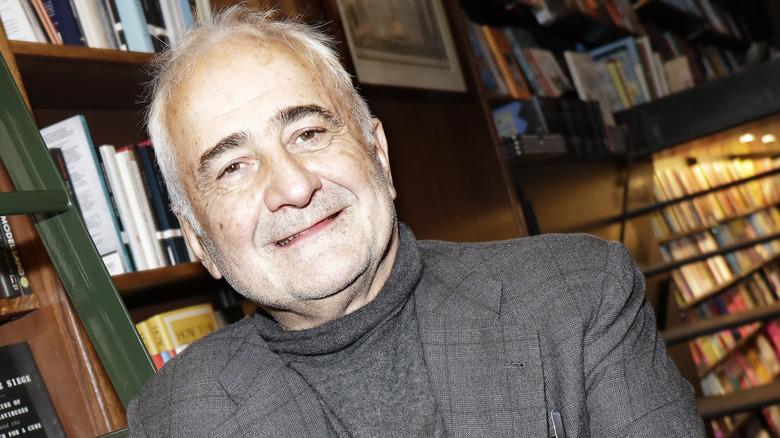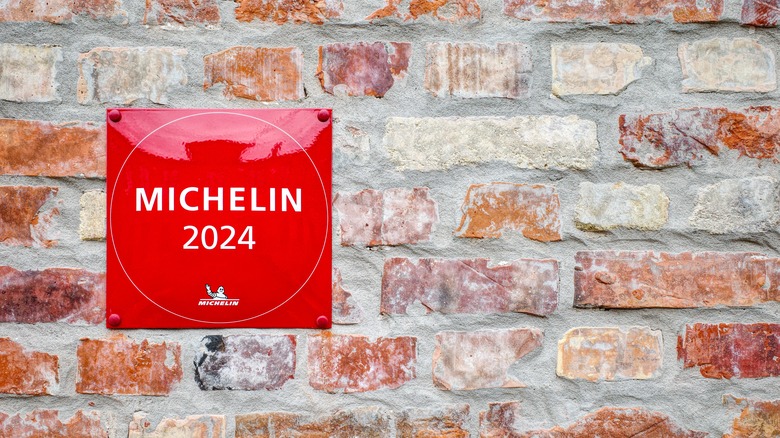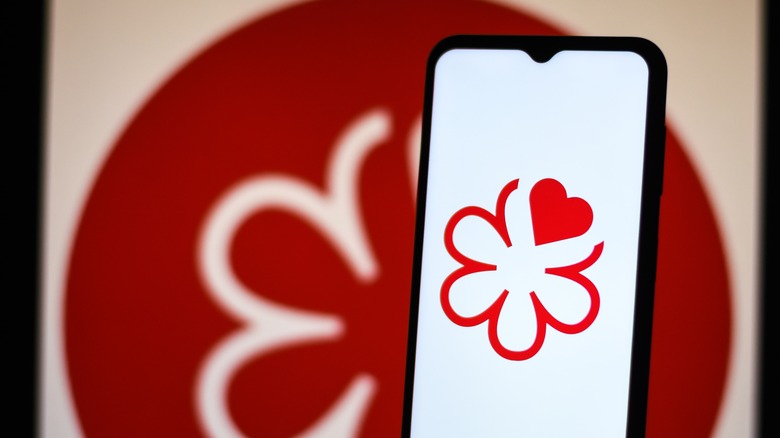Why Did Guy Savoy Lose A Michelin Star?
For Chef Guy Savoy, the reach of COVID-19 appears to be very, very long, indeed. In 2023, three years after the pandemic shut down the whole world, the 69-year-old was hit with a devastating blow. No, he didn't get sick that year. But apparently his restaurant, Monnaie de Paris, did — it was downgraded from a three-stars to two-stars in the renowned Michelin Guidebook. Talk about a case of long COVID.
The powers that be at the Michelin company don't make public the specific reasons why a Michelin-starred restaurant gets a downgrade. Instead, before the newest guide is made available to the average restaurant-goer, someone from the Michelin Guide team chats with the chef facing the demotion. In Savoy's case, Michelin Guide International Director Gwendal Poullennec called him personally to talk with him about the decision. The chef was reported to have responded to the news with "elegance" and "dignity," according to The Drinks Business. Understandably, the emotion during the conversation is said to have been "palpable."
Chef Savoy's Monnaie de Paris was one of around 20 French restaurants to face a star-level downgrade for the 2023 French guide. Like Savoy, many of them felt the pandemic's effect on the supply chain and on the availability of restaurant staff. And some might have lost a Michelin star because of that.
Ratings aren't permanent
For many chefs who have lost a star, the downgrade is a big deal. However, it's also critical to know that Michelin star ratings aren't permanent. Any rank has the potential to go up or down every year because inspectors visit those eateries annually (as well as some new ones, too, of course).
Additionally, each decision to award a star or take one away goes through a lengthy process. The Michelin inspectors who make the initial verdicts about the ratings work together to make the final pronouncements. Officials will even visit restaurants several times if the establishments are gaining or losing a star. They know the impact that a Michelin star can have on a business, so a decision to downgrade is never based on just a single experience. There are at least three visits, but more are undertaken if necessary, whether the restaurant is a Bib Gourmand eatery or a high-dollar, upper-crust establishment.
It's also worth noting that Michelin inspectors are often — but not always — trained chefs themselves, so a decision like this is taken from a community of peers. Because the Michelin Guide is important to foodies around the world, the publication needs to reflect a restaurant's current environment. This keeps the guide relevant for readers who consult it when making food choices.
Others who've been affected by a downgrade
Guy Savoy's situation seems particularly pronounced, given who he is in the food scene. After all, he was named the "Best Chef in the World" by La Liste for six years in a row. Savoy's Monnaie de Paris, and by extension the chef himself, had enjoyed a three-star status since 2002. But he isn't the only big-name chef to have lost a star in 2023 — fellow three-star chef Christopher Coutanceau had one removed from his La Rochelle, France restaurant Plage de la Concurrence the same year.
Elsewhere, celeb chef Gordon Ramsay lost a star in 2013 due to inconsistencies at The London, which was based in the Manhattan Hotel before closing its doors a year later. The Araki London went from a three-star to two-star restaurant after its namesake chef, Mitsuhiro Araki, left the eatery. And at least one restaurateur, Sébastien Bras, asked to be taken out of the yearly guide. He no longer wanted to face the pressure and accompanying stress that comes from being a Michelin-star restaurateur. After all, being removed from the guide takes away the inevitable challenges that come from being given a Michelin star or two — or being stripped of one.
Michelin star rating criteria
On the outside looking in, the Michelin system might seem arbitrary. However, the star inspectors who rate the restaurants that make the guide do have a system. It's the same worldwide, so in theory, no matter where you are, all starred restaurants should feel like they belong in the respective categories. In other words, a Michelin three-star restaurant in New York has the same quality as a restaurant ranked the same in Paris, even if the cuisines are different.
Speaking to Luxeat, ex-Michelin Guide inspector Chris Watson said restaurants that make the one-star ranking use plenty of local goods, feature sophisticated menus, and have dynamite plate presentation. A double-star establishment offers more complex dishes. The chef's culinary techniques become more sophisticated, too. The three-star restaurant has all that and more. This rating is about consistency, Watson said. That is, how good the restaurant is from one visit to the next. Because it's the type of restaurant that people will take a detour to visit while they're on a vacation, the makers of the guides need to be certain that the experience is going to be great once the traveling foodie gets there.
All of this explains why the pandemic may have had such an effect on the rating of Guy Savoy's Monnaie de Paris. It's more difficult to maintain quality when supply or employee issues hold up some aspect of the restaurant's operations. And even the best chefs in the world can't completely control that.



